

Flora Tristan (1803-1844)
“Virtue and vice suppose the freedom to choose between good and evil; but what can be the morals of a woman who is not even in possession of herself, who has nothing of her own, and who all her life has been trained to extricate herself from the arbitrary by ruse, from constraint using other charms?”
Flora Tristan (1803-1844) was a French utopian socialist active in the period leading up to the European Revolution of 1848-49. While she did not live to see the revolution in France, where it started, her contributions were representative of a broader socialist and women’s movement in this country that linked the ‘Woman Question’ to class struggles.
Flora Tristan was born in Bordeaux in April 1803 to a Peruvian-born Spanish aristocrat and bourgeois French mother. An illegitimate child of an unrecognized marriage, Tristan and her mother were financially dependent on her father and they fell into financial distress upon his death. She eventually sought out her father’s family in Peru to claim her inheritance, but it was denied to her. She chronicled her experience in Peru in Pérégrinations d’une paria (Peregrinations of a Pariah 1833-1834). In it she discusses her solo journey to Peru during a tumultuous post-independence era in a time where European women did not travel alone. Tristan also denounced marriage laws in both Peru and France and viewed the lack of female autonomy within social institutions to be its own form of slavery.
In many ways Pérégrinations d’une paria was merely an affirmation of Tristan’s growing involvement in the early French socialist women’s movement in the decade before the Revolution of 1848-49. In 1827, several years prior to her escape to Peru, she became involved with the Gazette des Femmes ( Women’s Journal) that primarily dealt with divorce. Her own unhappy marriage and frustration with the marriage laws that prevented her from claiming her inheritance made the Gazette des Femmes appealing to the young Flora Tristan.
Tristan’s work did not stop here. Her observation of the female condition in both France and Peru had inspired her to take up arms for a number of social issues. In 1837 she published the Petition to Reinstate Divorce. She used observations from her time in Peru to help bolster her argument and display the consequences and tragedies faced by women that were denied the right to divorce. In 1837 she published a second petition, Petition of the Abolition of the Death Penalty, in the Journal du Peuple (Journal of the People). In it she states that the injustices committed by the people are born out of necessity and created by an unjust society.
The idea that societal hierarchies played an essential role in perpetuating social issues bled into her later work. Tristan took two trips to industrial Britain after her return from Peru in 1836 and 1839. After her second visit she penned Promenades dans Londres ( Promenades in London, 1840 ), which cautioned the working class against the dangers of the Industrial Revolution. Seeing the realities of the British working class in an industrialized economy fueled Tristan’s efforts and provided further inspiration to promote socialist work ideals.
In arguably her most famous work, L’Union Ouvrière (The Worker’s Union) , published in 1843, she married both the female condition and the plight of the working class. In it she argued that the only way to liberate the working class is to liberate and incorporate women into the socialist movement. To do this she proposes a “Universal Worker’s Union” in which all members of the proletariat would belong regardless of profession or sex. To promote L’Union Ouvrière , Tristan scheduled a tour across France to bring the message of her writing to working class people. Shortly after the beginning of the tour, however, Tristan fell ill and died in 1844. More than 1,500 workers from different trade honored her death at the dedication of her tomb. She fought fiercely for the rights of women and workers until her final days.
Flora Tristan is one of the most interesting women in the early nineteenth century. Her story is a passionate one defined by self-discovery catalyzed by her travels to Peru and Britain. She is a significant historical figure and contributed positively through her writings for the emancipation of both women and the working class. Flora Tristan’s work helps perpetuate understanding of these historical struggles and serves to inspire future generations of women to fight for what they believe in.
Lauren Overton , Chemistry and Neuroscience, Class of 2019
Literature and Websites
- Amarante, Maria Inês. “Flora Tristan: Militant Journalism in a Time of Revolts.” Revista Katálysis Magazine 13, no. 1 (2010): 110-118.
- Biggs, Mary, Women’s Words: The Columbia Book of Quotations by Women , New York: Columbia University Press, 1996.
- Foley, Susan Foley, “In Search of ‘Liberty’: Politics and Women’s Rights in the Travel Narratives of Flora Tristan and Suzanne Voilquin,” Women’s History Review 13, no. 2 (2004): 211-231.
- Paulk, Julia C. “Representations of Slavery and Afro-Peruvians in Flora Tristan’s Travel Narrative, Peregrinations of a Pariah ,” Afro-Hispanic Review 29 , no. 1 (2010): 117-134.
- Tristan, Flora, “L’Union Ouvrière,” in Lives and Voices, Sources in European Women’s History, ed. Lisa DiCaprio and Merry E. Weisner, 102. Boston: Houghton Mifflin Company, 1998.
- Image 1: Source
- Image 2: Source
- Image 3: Source
Where next?
Explore related content
A Pariah's Pilgrimage
Flora tristán 1838, national library of peru lima, peru.
Flora Tristan (Paris, 1803 - Bordeaux , 1844), feminist writer of French and Peruvian descent, published in 1838 in Paris Peregrinations d'une paria, a chronicle on her trip to America and her stay in Peru between 1833 and 1834, sharply describing post-colonial Peruvian society and the Peruvian ideals to consolidate a Nation. In addition, she writes about her past and her marginal social situation as a disinherited woman and a worker. Unlike the fictional device used by other female writers of the time to tell the dramas of nineteenth-century femininity, Tristán writes in an autobiographical tone, signing her own name.
- Title: A Pariah's Pilgrimage
- Creator: Flora Tristán
- Date Created: 1838
- Location Created: Paris, France
- Type: Internal Cover
- External Link: A Pariah's Pilgrimage
- Medium: Book
Get the app
Explore museums and play with Art Transfer, Pocket Galleries, Art Selfie, and more

The Best Travel Literature of All Time
Like many travellers, you may have found yourself immersed in the voyages of those who have gone before you from time to time. While living vicariously is no replacement for being on the road, there are some utterly wonderful nonfiction travel books out there, which are the next best thing.
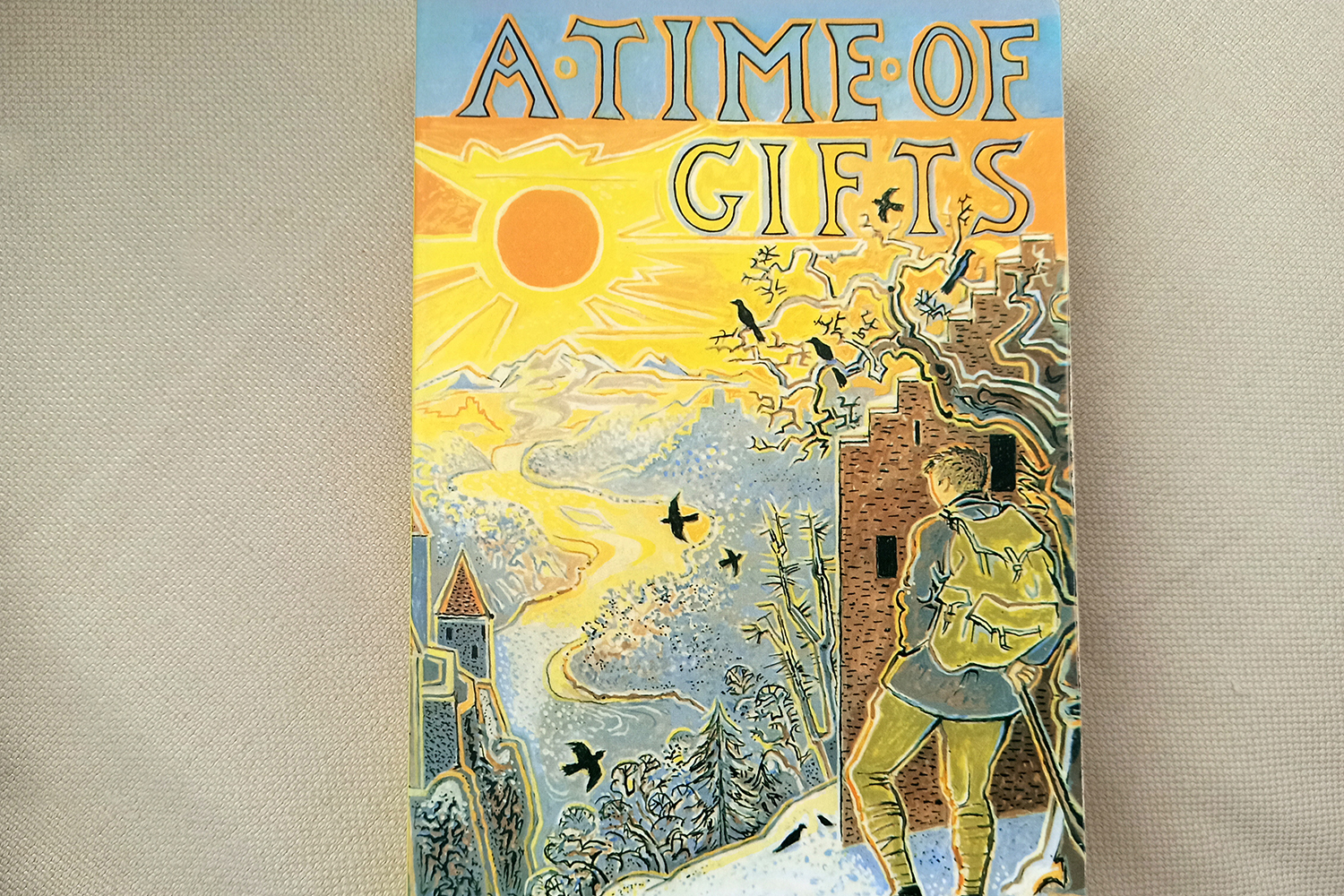
A Time of Gifts by Sir Patrick Leigh Fermor (Photo: Paul Stafford for TravelMag.com)
It’s quite genuinely impossible to create a comprehensive list of the best travel literature. While there’s a lot of replication of these types of lists out there, some books endure precisely because of their importance at the time or to other writers. Although some authors listed below deserve to have more than one of their books featured on this compendium of the greatest travel literature, only their finest work has been included. Consider it your gateway to that writer’s greater oeuvre, if you’ve not read any of their work previously; a reminder if you have. Similarly, non-male writers have often been unfortunately overlooked in the past and some real gems that deserve to be on the best travel literature of all-time lists have been overlooked.
The following aims to redress the balance a little. Consideration is also given to some of the works that defined people who are now better-known for their other exploits, because there’s no greater adventure than that of somebody whose travels inspired them to do something more important or lasting in the world beyond merely moving through space and time for travel’s sake. Here are twenty of the best pieces of travel literature ever written (theoretically), to guide you to your next read, to find inspiration for your next trip, or to simply use as a general reading checklist until your next journey.
A Time of Gifts (1977) – Sir Patrick Leigh Fermor
Writing about Paddy Leigh Fermor in 2020, it would be easy to dismiss the great writer as a privileged individual who was fortunate to stay with royalty and the well-to-do all across Europe as he sauntered from one place to the next. But that would be an awful disservice. A Time of Gifts is the first of a trilogy of books documenting his journey, on foot, from the Hook of Holland to Constantinople (Istanbul). His scholarship and complete immersion in every culture he encountered helped his writing transcend mere travel literature to reach a higher level of writing. You never feel as though he’s an outside observer trying to make sense of the foreign by superimposing his own beliefs. His prose has been described as baroque, and is densely layered with a deep intelligence, understanding and, above all, passion for everything he encounters. The trip itself was undertaken in 1933/4 and the Europe that Fermor uncovers on his peregrinations is one which is beginning to spiral blindly into major conflict. Somehow this aspect makes the random acts of kindness he experiences across Germany and the rest of the continent even more bittersweet.
Publisher: John Murray, Buy at Amazon.com
Arabian Sands (1959) – Sir Wilfred Thesiger
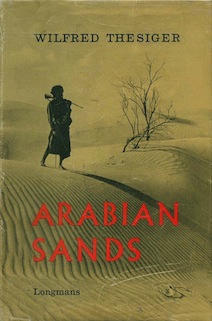
Arabian Sands by Wilfred Thesiger (Photo: courtesy of P.S. Burton via Wikimedia Commons)
Another travel literature classic is Thesiger’s intrepid anthropological look at Bedouin culture and lifestyle in one of the remotest, most inhospitable places on earth: the Arabian Peninsula’s Rub’ al Khali. The setting for the journey is amid the embers of World War II, the repercussions of which were being felt worldwide, including among the Bedouin tribes who’d lived much in the same way they always had until the outside world intruded. In effect, this book offers a snapshot of a remarkable culture that was fast altering, which is what makes this, and many of the books written during the reign of the British Empire, fascinating historical documents. For all of the rightful condemnation of European colonialism, one thing is clear in this book: the fascination and inquisitive nature of the many British scholarly individuals sent to far-reaching corners of the globe created an immensely valuable cache of first-person accounts of cultures and peoples that may not have been recorded otherwise amid the inevitable and inescapable rise of globalisation of the time.
Publisher: Penguin Classics, Buy at Amazon.com
Black Lamb and Grey Falcon (1942) – Rebecca West
West’s voluminous, in-depth examination of Yugoslavia during her time travelling there in 1937 was designed to explore how the country was a reflection of its past. West spent six weeks journeying across the whole region with her husband and meeting eminent citizens along the way. Sadly, by the time the book was published, the Nazis had invaded and the country would never be the same again, which makes this yet another invaluable early-20 th -century document. What sets Black Lamb and Grey Falcon apart though is the level of exquisite detail and research dedicated to the subject. If there was any proof required that travel literature serves an invaluable purpose as a piece of primary historical evidence, then this may well be it.
Publisher: Canongate Books, Buy at Amazon.com
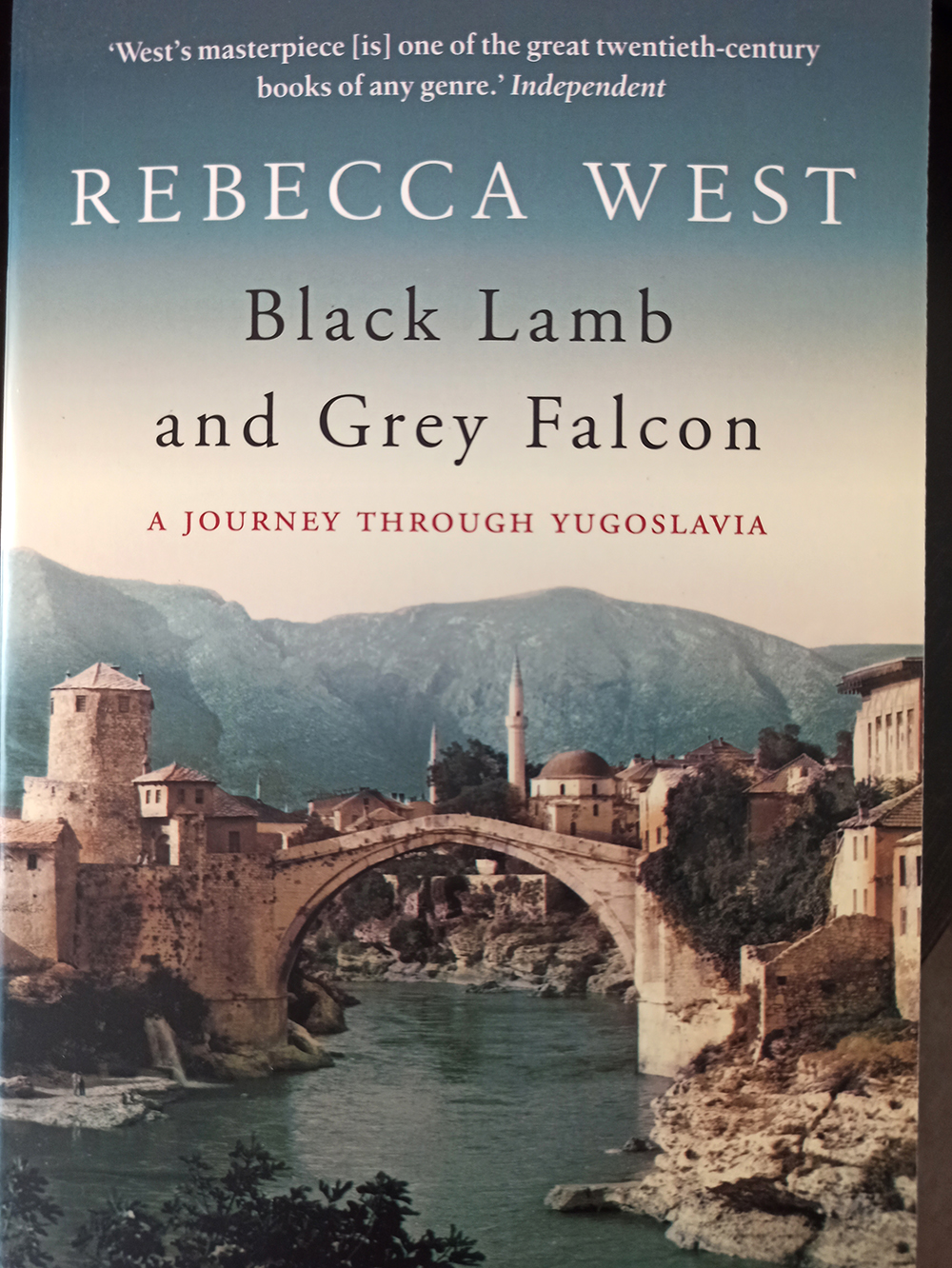
Black Lamb and Grey Falcon by Rebecca West (Photo: Paul Stafford for TravelMag.com)
Border (2017) – Kapka Kassabova
Beautifully written and layered with a real sense of atmosphere, Kassabova’s haunting Border is one of the standout pieces of travel writing to be published in the last decade. Eastern Europe is one of the least explored regions of the world in travel literature. Owing perhaps in part to the secrecy and legacy of distrust brought about by the Cold War, even those who have travelled through as part of longer journeys (Paul Theroux in Pillars of Hercules or Bill Bryson in Neither Here Nor There ) scarcely shed any real light on the region. Here, Kassabova heads back to the nation of her birth (Bulgaria) to explore the fragments of political ideology, faith and race, and the blurred lines between them, that have developed around the border region separating Bulgaria from Greece and Turkey.
Publisher: Granta Books, Buy at Amazon.com
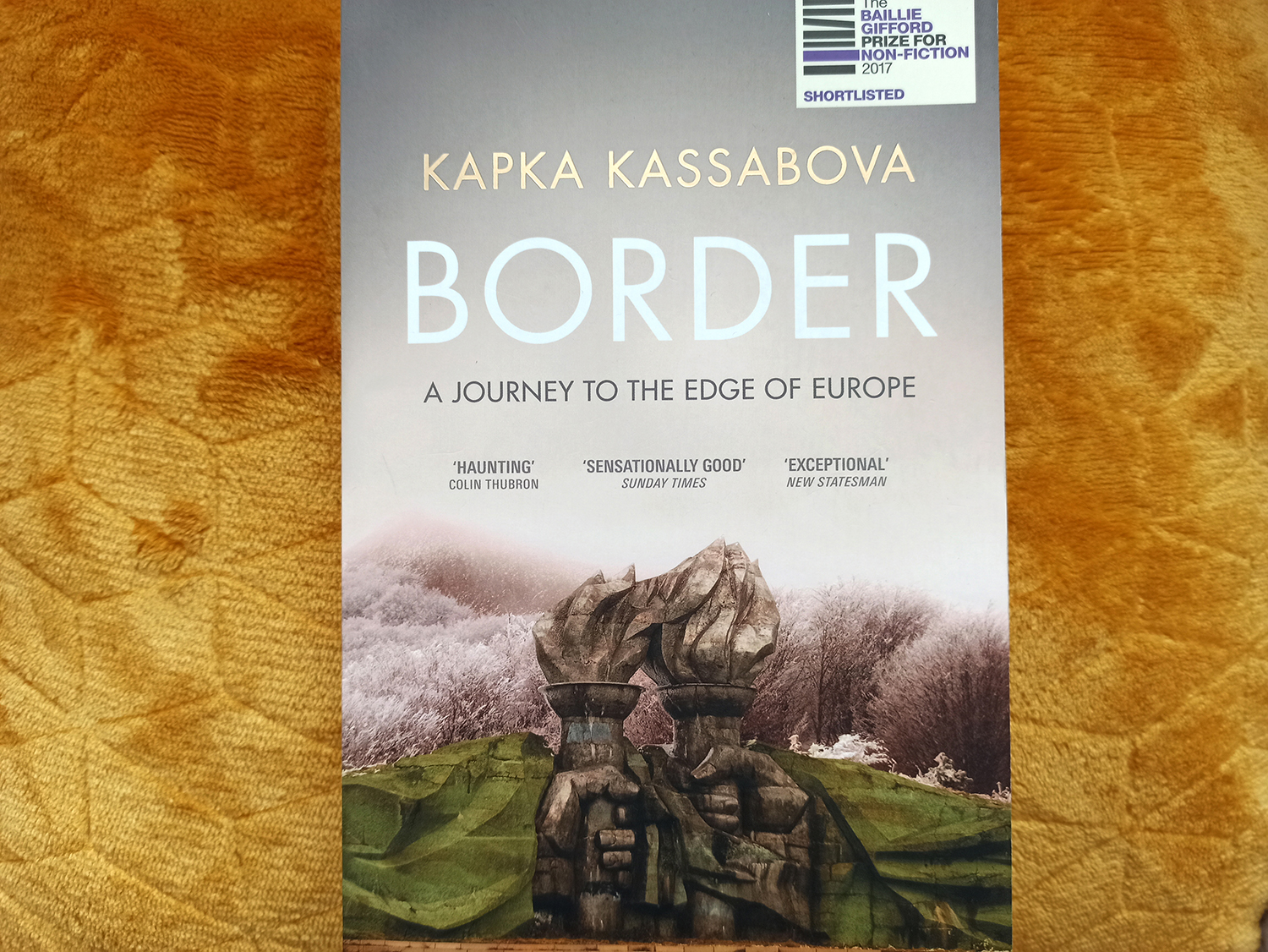
Border by Kapka Kasabova (Photo: Paul Stafford for TravelMag.com)
Down and Out in Paris and London (1933) – George Orwell
While much of travel literature is concerned with the voyage and seeking out the miraculous, the unique and the lesser known, Orwell took another route entirely. Down and Out in Paris and London does exactly what it says on the tin. It is a memoir of impoverished living in two of the world’s great cities, at a time when they were global beacons in terms of both power and culture. Not only does this book, in a very prescient move, eschew the superior tone of academia when examining the other, it also avoids all glamour in those cities, focussing entirely on the poor, the meek and the desperate. In Paris he lives on the edge of eviction, working the kitchens of a fancy establishment, while in London he lives the life of a tramp, moving from one bunkhouse and soup kitchen to the next, living day to day. It is to travel writing what the ‘method’ is to acting.
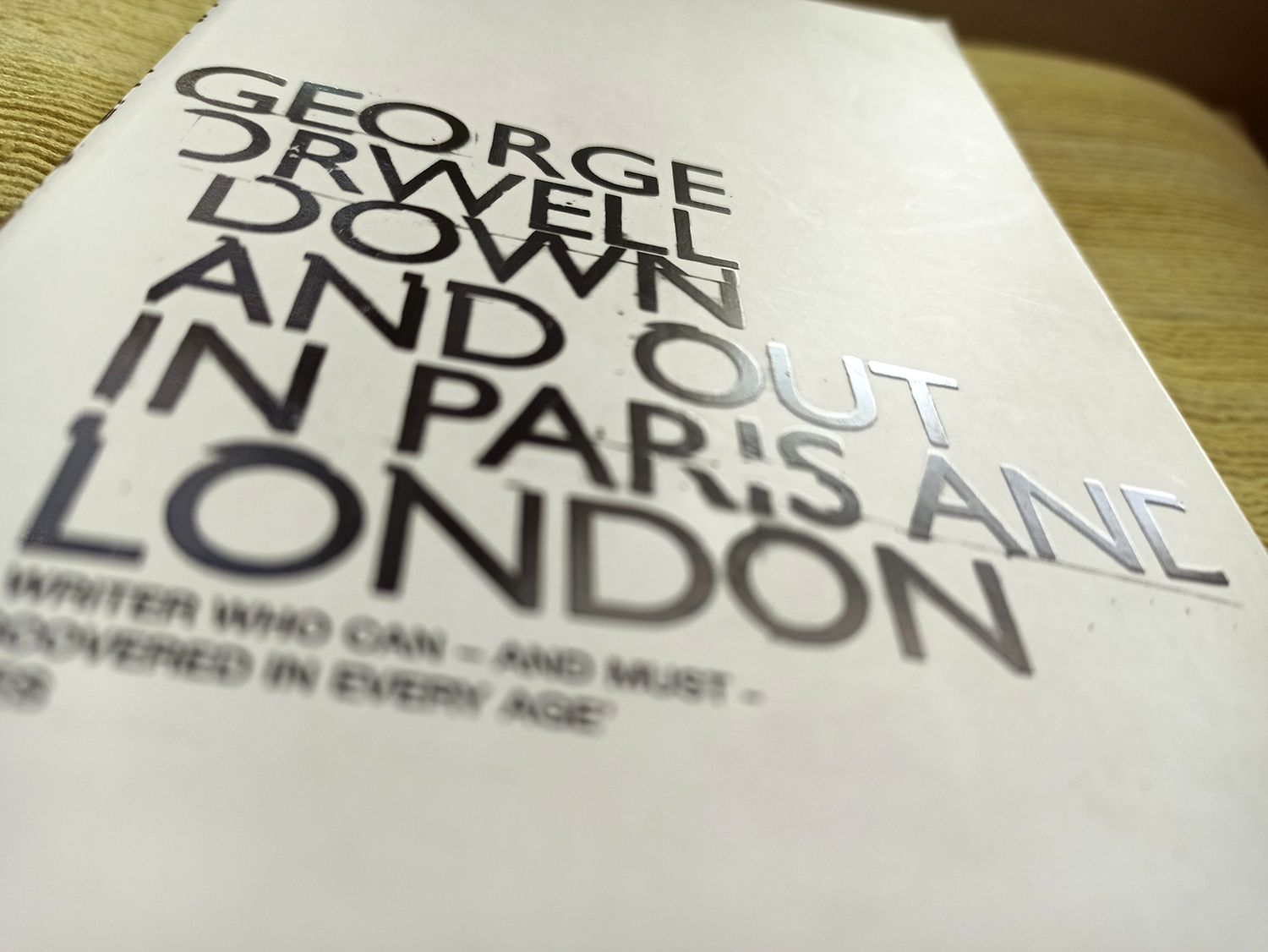
Down and Out in Paris and London by George Orwell (Photo: Paul Stafford for TravelMag.com)
Fear and Loathing in Las Vegas (1972) – Hunter S. Thompson
The outlier on this list (all good lists need one) is Hunter S. Thompson’s delightfully absurd, occasionally apocryphal and downright debauched novel Fear and Loathing in Las Vegas . In it, he created a new way of writing known as gonzo journalism, a style of storytelling which is found most commonly today in some documentaries, where the lines of fact and fiction become blurred and with the journalist placed as a central character in the story. This brilliant commentary on the flexible and inconsistent nature of truth was perfectly epitomised by the increasingly hallucinogenic recollections of protagonist Raoul Duke and Dr. Gonzo. The road trip to Las Vegas ultimately casts important light on an American society gripped by racism and violence (partly why the story is still so powerful today is that America hasn’t yet learned to grow up). As such it remains one of the most intriguing snapshots of America out there, surpassing the work of many strait-laced travel narratives in the process.
Publisher: Random House Inc., Buy at Amazon.com
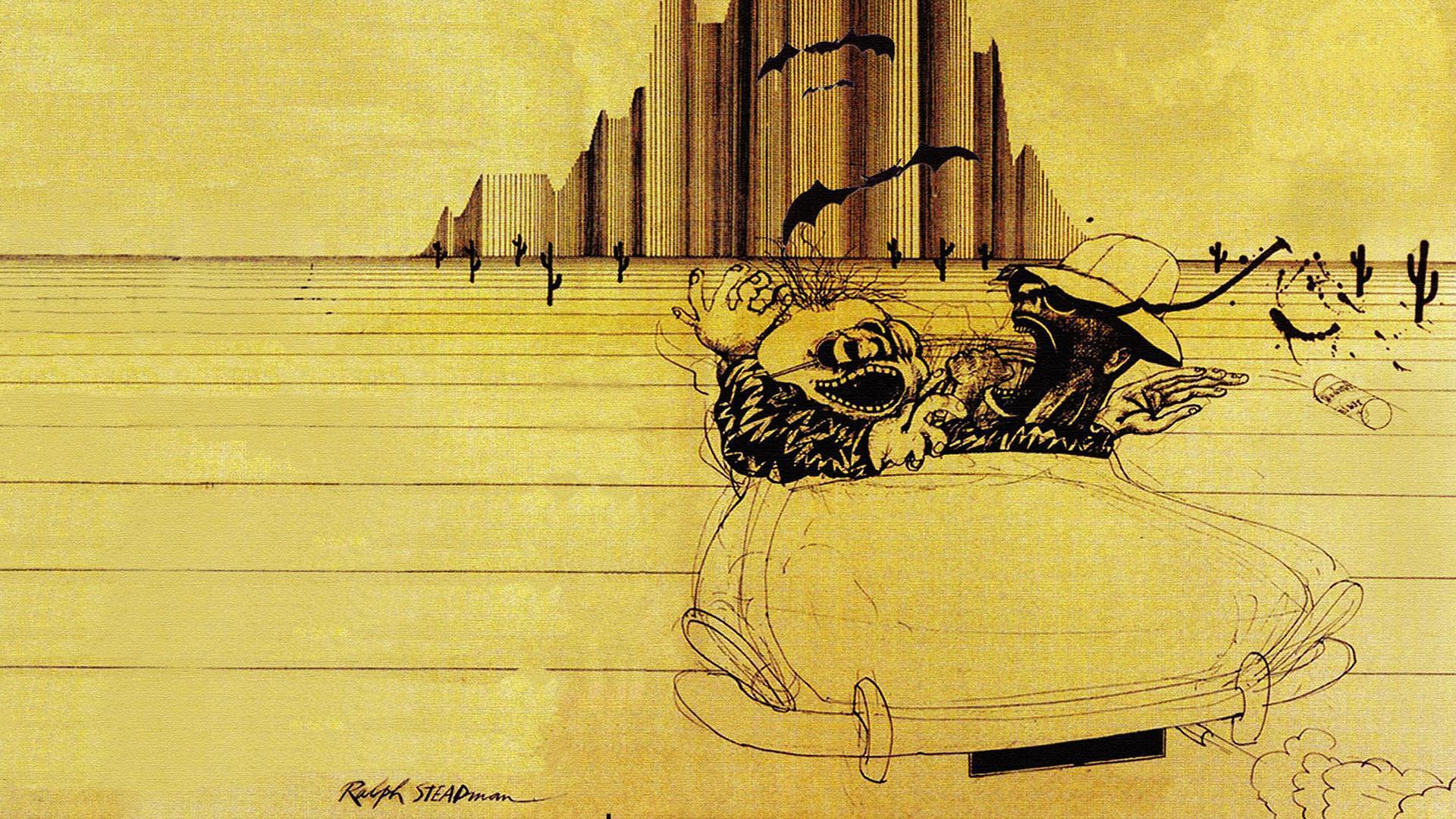
Fear and Loathing in Las Vegas by Hunter S. Thompson (Photo: Mathieu Croisetière via Flickr / CC BY-SA 2.0)
The Great Railway Bazaar: By Train Through Asia (1975) – Paul Theroux
A perfect example of how gonzo journalism began to seep into travel literature comes from what is arguably the most important modern travelogue: The Great Railway Bazaar . In it, Theroux travels from London all the way to Southeast Asia and Japan, via India, then back to Europe via Russia’s Trans-Siberian railway. While Theroux upholds elements of the old school travel narrative – like the scholarly, studious approach and the inquisitive air – his journey by train is as much about the growing backpacker, hippie, trail and the western counterculture that encouraged it. Occasionally the line between fact and fiction is blurred in his writing, but only to better convey his interactions with the people he met. As such, you get a fascinating look at what could be called modern colonialism, whereby the train networks that were often built by colonial rulers in non-European nations across the world, like India and Burma, were now being used by a new generation in the post-colonial era to explore these newly-sovereign nations.
In Patagonia (1977) – Bruce Chatwin
Coming hot on the tail of Theroux’s above book is perhaps the most popular and enduring travel book of all time: In Patagonia . Bruce Chatwin starts it off with a direct nod to writing and journalism’s slide into apocrypha by framing his trip loosely around the search for remains of a “brontosaurus” found in a Patagonian cave, which he first found languishing in his grandparent’s house. The doubtful story behind this find sets him on a road where he aim to unravel various other mysteries whose only connection is geographical, including the final resting place of Butch Cassady and the Sundance Kid, in the wild, empty spaces of South America. It’s a brilliant book formed of loose sections that don’t directly link to one another but has greatly influenced modern travel literature today.
Publisher: Vintage Classics, Buy at Amazon.com
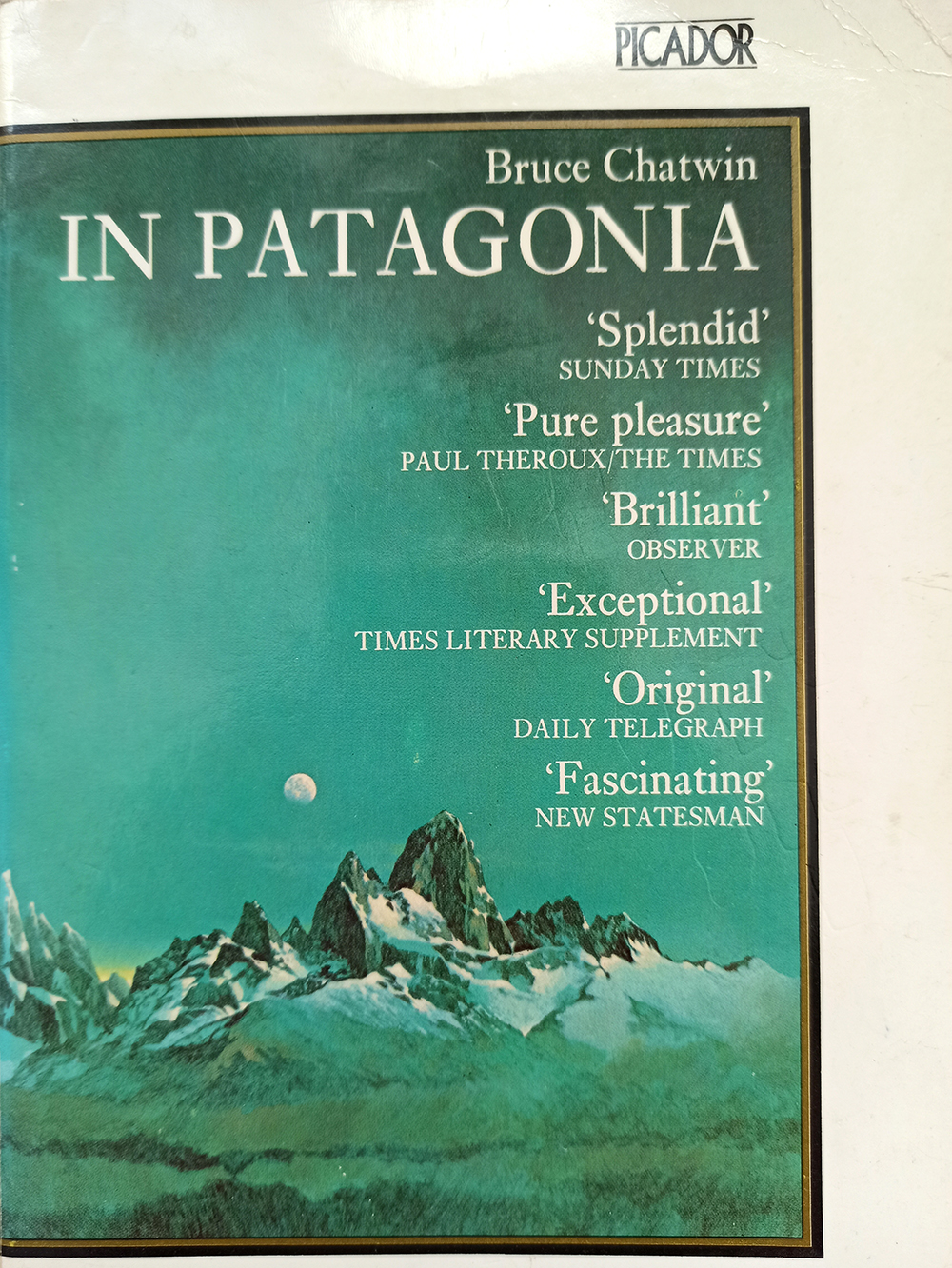
In Patagonia by Bruce Chatwin (Photo: Paul Stafford for TravelMag.com)
In Xanadu (1989) – William Dalrymple
One of the travel writers greatly influenced by Chatwin was William Dalrymple, whose own quest for his first book, In Xanadu , was framed as a search for the fabled palace of Kublai Khan, Xanadu. This type of narrative has always proven to be a ready source of inspiration for some of the better modern travel books; searching for answers to popular mysteries. It has a journalistic bent to it, and manages to sidestep the awkwardness of westerners merely travelling abroad and casting aspersions about the people and cultures they encounter through an imperial gaze, as is the criticism often lodged again some of the earlier works of travel writing. Here, Dalrymple follows in the footsteps of Marco Polo (following footsteps of somebody famous is also a common trope of travel literature) to find the palace. While Dalrymple restores elements of the scholarly, learned approach common to writers like Robert Byron and Paddy Leigh Fermor, you can feel the impact of those 70s writers as well.
Publisher: Flamingo, Buy at Amazon.com
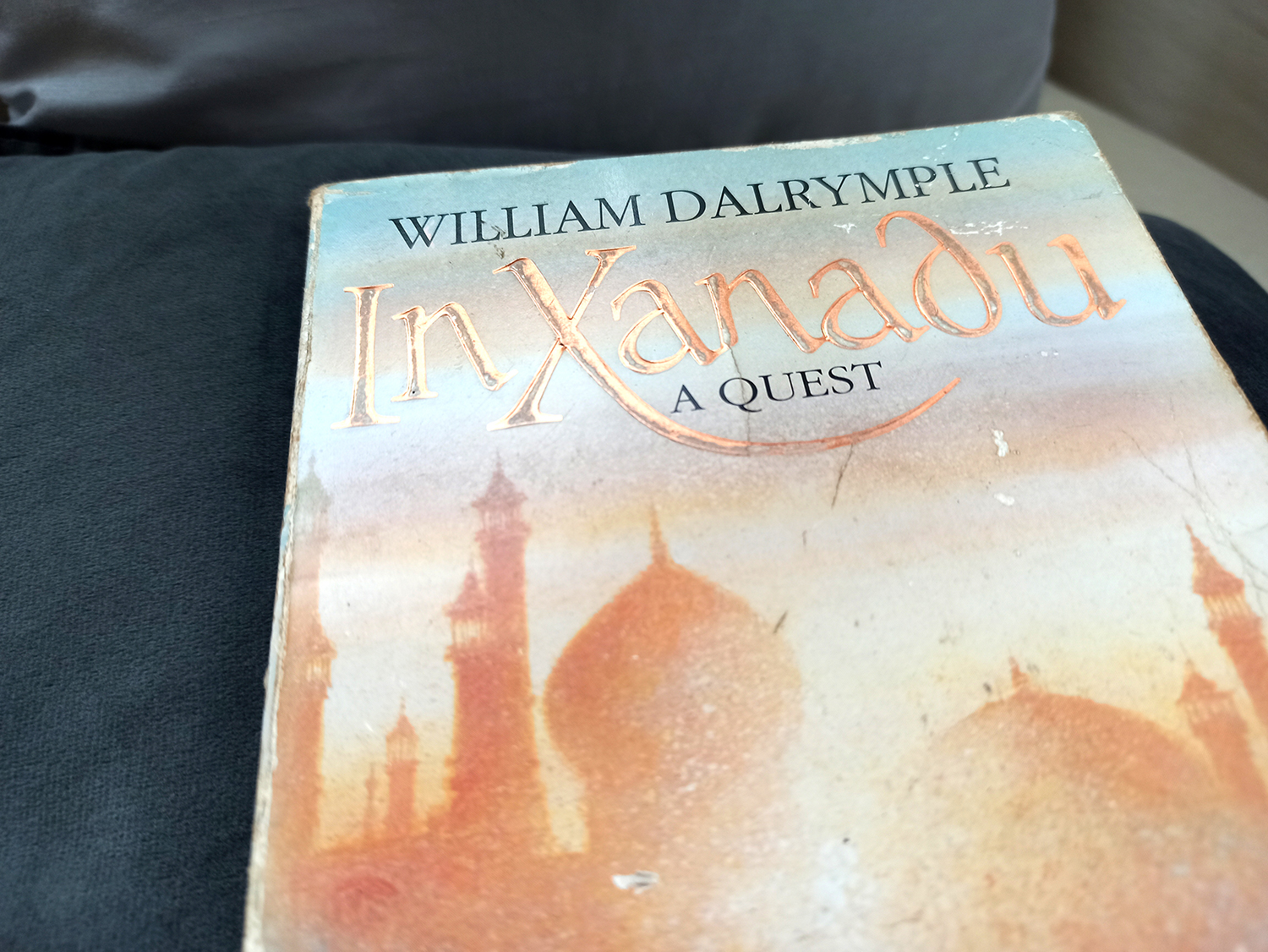
In Xanadu by William Dalrymple (Photo: Paul Stafford for TravelMag.com)
Into the Wild (1996) – Jon Krakauer
Few gripping travel narratives manage to capture the why? of our impulse to roam quite like Jon Krakauer does in Into the Wild . The book is both harrowing and revelatory, while performing a third-person character study on a young man he never actually met. In 1992 Chris McCandless walked into the Alaskan wilderness and never came back out. The book tries to examine what had led him there in the first place, whether he’d intended to return at all, and why he wasn’t the first to try and cut all ties with modern society. Krakauer looks to others, such as Henry David Thoreau ( Walden is the original escape from society book and a must-read for anybody fascinated by this subject), who successfully parted from the rat race, as well as the reasons McCandless initially fled from well-to-do family life years before and never contacted them again in his search for something more profound and meaningful. While most readers may disagree with McCandless’s methods, his motives seem far more familiar and relatable.
Publisher: Pan Macmillan, Buy at Amazon.com
The Living Mountain (1977) – Nan Shepherd
Perhaps one of the finest pieces of nature writing ever committed to paper is The Living Mountain by Nan Shepherd. Sadly, it’s also one of the most underrated books. The research for her book was undertaken in and around 1942, during the Second World War, which didn’t trouble the wilds of Scotland too badly. Here, the stark beauty of the Cairngorms seems to mirror the harsh reality of war. But Shepherd’s deep examination of the various microcosms of life that thrive on the region’s mountains is really a poem that exalts life. It’s a celebration of survival and endurance. Her wonderful book almost never made it to print, lying in a drawer for decades until a friend read it and encouraged her to seek out a publisher. We’re lucky it did.
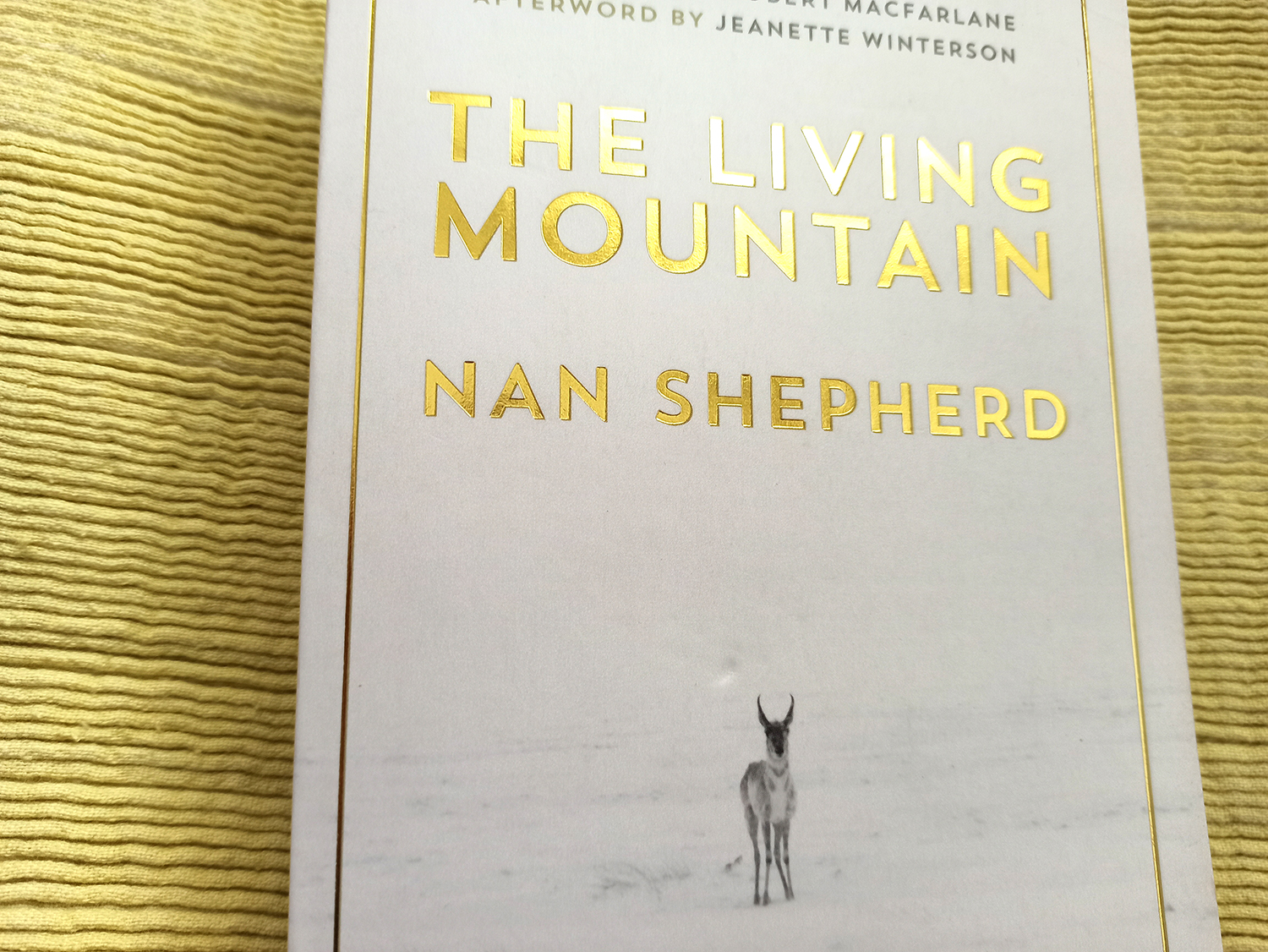
The Living Mountain by Nan Shepherd (Photo: Paul Stafford for TravelMag.com)
The Motorcycle Diaries (1992) – Che Guevara
Even if Che Guevara never became the revolutionary and icon of a generation that he did, The Motorcycle Diaries is a fascinating first-person account of travel’s capacity to broaden the mind. The young medic Ernesto ‘Che’ Guevara sets out from his home in Buenos Aires with his friend Alberto Granado sharing a motorcycle ‘La Poderosa’ and in his pointed recollections, you can almost feel Che’s ideological shift. He sees poverty and pain and beauty in the poor communities they visit, and through this, we learn a lot about how Guevara became a key player in the Cuban Revolution. But it’s also a beautiful rumination about the paths we take in life and the importance of curiosity.
Publisher: Perennial, Buy at Amazon.com
Notes from a Small Island (1995) – Bill Bryson
You can’t really write a top travel literature list and omit Bill Bryson. He’s one of the finest travel writers still producing books. Notes from a Small Island is particularly intriguing because, while most of the books that make any top travel literature list tend to be written by Brits, this is a book about Britain, written by an American. And it’s a delightfully observed book at that, pinpointing the eccentricities and unusual aspects of the island nation that most Brits would never think twice about, but when seen through foreign eyes suddenly become absurd. Bryson is especially gifted at making even the most mundane things seem funny. His books neatly balance thorough research and scholarship with humour and keen observation, effectively amalgamating all of the key aspects of travel literature into one inimitable style.
Publisher: Black Swan, Buy at Amazon.com
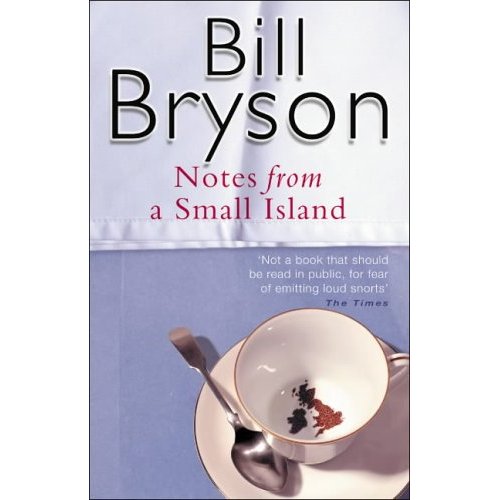
Notes from a Small Island by Bill Bryson (Photo: Wolf Gang via Flickr / CC BY-SA 2.0)
On the Road (1957) – Jack Kerouac
Before modern travel literature’s more self-aware phase that started in the 1970s, we had what essentially kick-started the great 20 th -century American cultural upheaval: The Beat Movement. Kerouac was writing about sexual promiscuity, wanton drug use and giving the establishment the middle finger way before it was cool to do so. Well-educated and moving in New York’s literary circles, Kerouac’s thinly-veiled characters in On the Road (substituting Old Bull Lee for William S. Burroughs, Dean Moriarty for Neal Cassady, Carlo Marx for Allen Ginsberg, and Sal Paradise for himself) are painted into a quasi-fictional account of his cross-country jaunts in the late 1940s. The post-war world was much-changed; the white picket fence America with its Jim Crow segregation and uptight Bible-belt hypocrisy were no longer acceptable. Around the same time, J.D. Salinger was branding it phoney, while Kerouac was realising this in his own way, by embracing escapism and drugs. On the Road still resonates today; both the book and the Beats gave licence to a generation of youths to question the oppressive system that became all too obvious in the 60s.
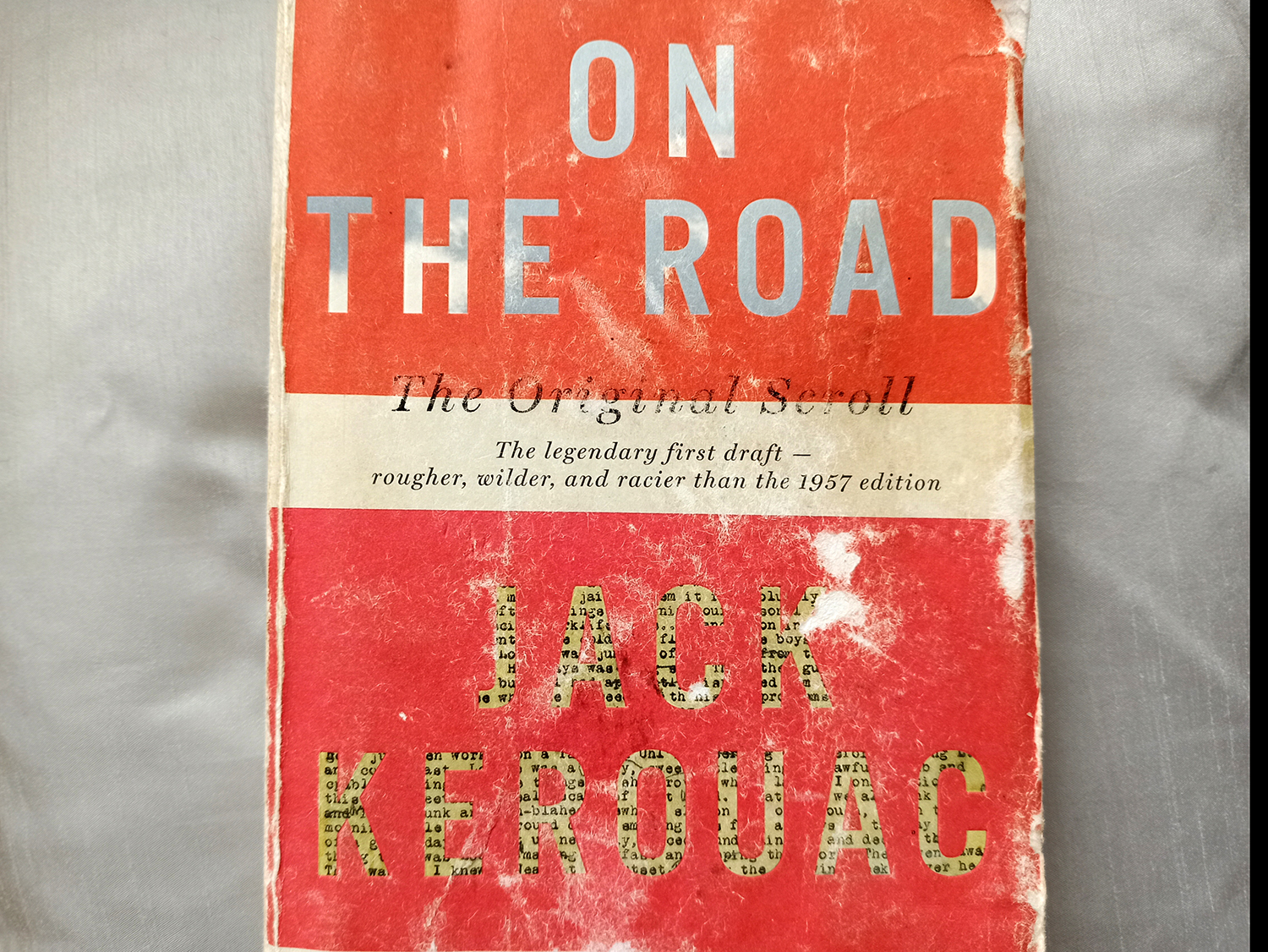
On The Road by Jack Kerouac (Photo: Paul Stafford for TravelMag.com)
The Road to Oxiana (1937) – Robert Byron
Much of the Afghanistan and Iran of Byron’s writing has disappeared, making the precision of his prose all the more valuable. The Road to Oxiana has all the classic elements of earlier travel narratives in it, scholarship, keen observation but also the kind of humour and casual presentation that would become far more popular in the writing styles common to the latter half of the 20 th century. Byron’s constant use of Marjoribanks to replace the name of the Persian ruler of the time was designed to evade censure or punishment in case his notebooks were confiscated and read. The humour of this rebelliousness is not lost when read today, even if some of his style may feel a little bit dated now. His architectural descriptions may be among some of the finest in all of travel literature.
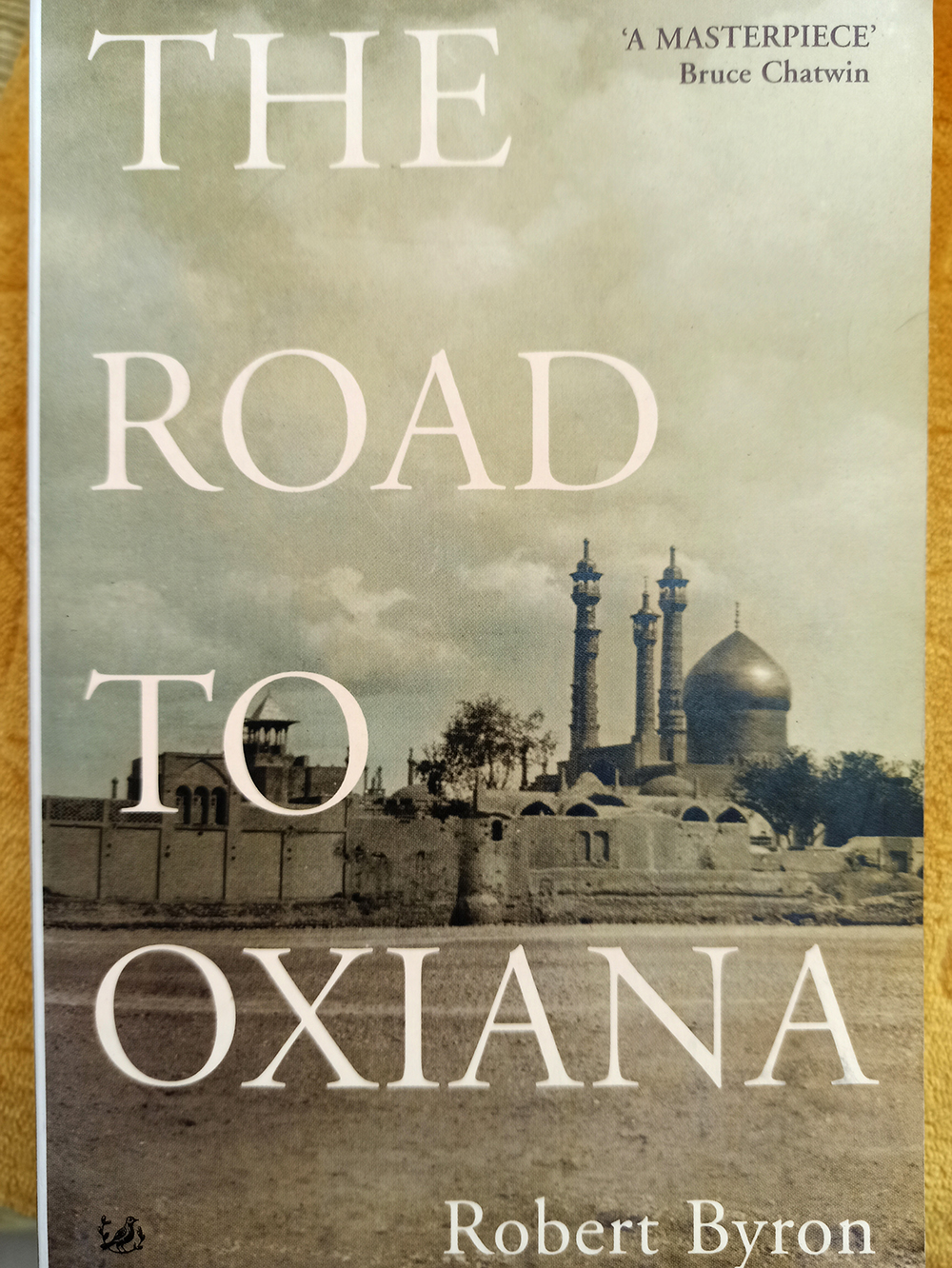
The Road to Oxiana by Robert Byron (Photo: Paul Stafford for TravelMag.com)
Rome and a Villa (1952) – Eleanor Clark
Because the majority of travel writing is crafted around a voyage or quest of some sort, we expect the movement to transcend places, countries even. What Clark does exceptionally well in Rome and a Villa is offer an in-depth depiction of just one city: Rome. This book, although not particularly tied to or crafted around any one specific idea, offers a deeper understanding of The Eternal City based on Clark’s explorations, often on foot. Indeed, her scholarly treatment of the Italian capital brings the city’s rich, storied past to life in imaginative and illuminating ways that offer fresh insight on a place that we may easily think has already been well covered already. Which goes to show that places change with the times offering an opportunity for fresh perspectives. There’s nowhere that is dull or too well-known in travel writing if handled by the right scribe.
Publisher: Harper Perennial, Buy at Amazon.com
Shadow of the Silk Road (2007) – Colin Thubron
Colin Thubron’s fascination with worlds that are ostensibly closed off to westerners has often led him into places that many others wouldn’t think to go. He visited China before it had opened up to the world, and the same goes for Soviet Russia. In Shadow of the Silk Road Thubron exhibits why his books are perhaps the most masterfully crafted of all contemporary travel literature. His pacing and descriptive writing are exquisite, particularly in this book, in which he journeys from Xi’an to Antakya in Turkey following the old ways, through Central Asia, once known as the Silk Road. The worlds he uncovers and the people he meets are painstakingly woven into a rich text, much like a hand-woven Persian rug, that is one of the most evocative pieces of travel writing out there.
Publisher: Vintage, Buy at Amazon.com
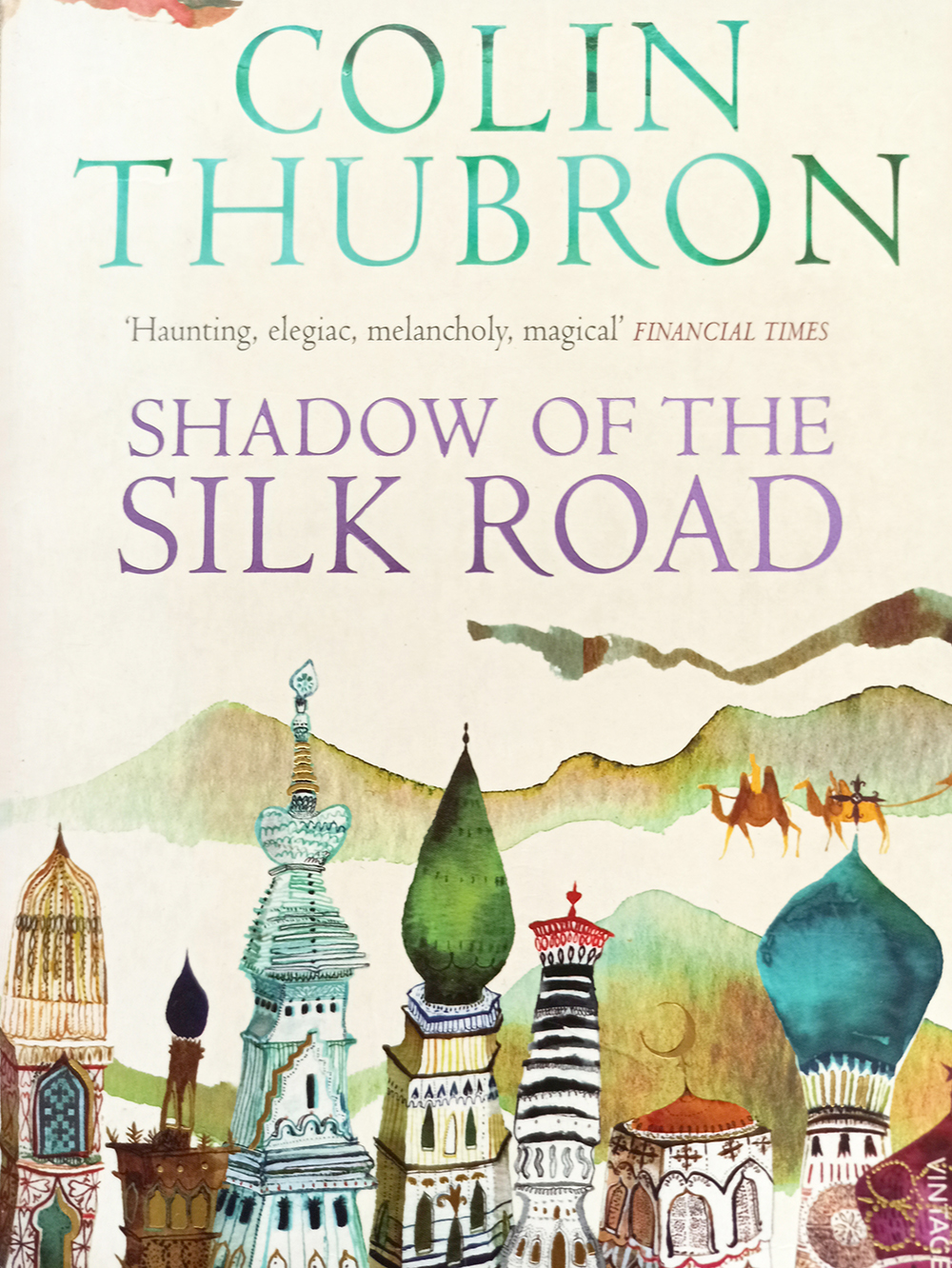
Shadow of the Silk Road by Colin Thubron (Photo: Paul Stafford for TravelMag.com)
Travels with Myself and Another (1979) – Martha Gellhorn
Even if Martha Gellhorn was writing today, she would rightly be upheld as one of the great journalists, but given that she was doing it decades ago, often better than her counterparts in a male-dominated field, is even more remarkable. The ‘Another’ that accompanies Gellhorn through much of the book was her former husband Ernest Hemingway, but the book also includes memoir from Africa in which she voyages solo. The book is presented as a collection of essays, a format that has become increasingly common in travel writing and which effectively allows the book to focus on more than one topic. Gellhorn’s writing includes keen observation, lively wit and a really sharp political outlook.
Publisher: Eland Publishing Ltd., Buy at Amazon.com
The Valleys of the Assassins (1934) – Freya Stark
Stark was an incredible human being. Fluent in numerous languages, including Farsi, she travelled the world often alone at a time when even men undertaking such journeys were considered intrepid. Stark was particularly drawn to the Middle East and was able to recount the stories of the women there, living in devout Muslim communities, in a way no man would ever have been able to do. She also discovered regions that had not been explored by Westerners before, including the Valley of the Assassins, which forms the basis of this eponymous book, receiving the Royal Geographical Society’s prestigious Back Award in the process. She continued to write books well into her 90s (releasing work over six decades) and died in Italy at the age of 100.
Publisher: Modern Library Inc., Buy at Amazon.com
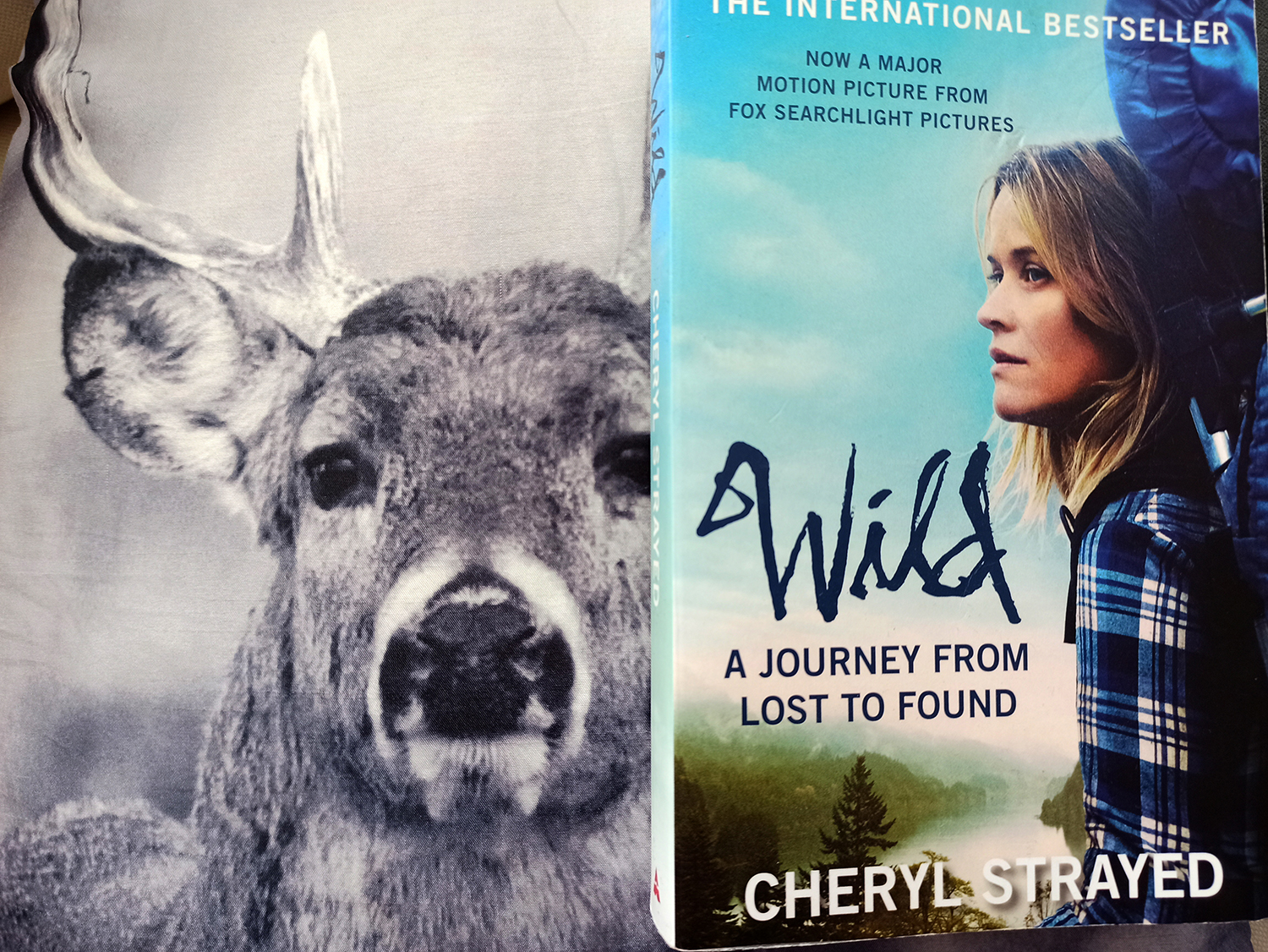
Wild by Cheryl Strayed (Photo: Paul Stafford for TravelMag.com)
Wild: From Lost to Found on the Pacific Crest Trail (2012) – Cheryl Strayed
Some may question this popular book’s inclusion on a list of the all-time greats, but it really has all the ingredients of a classic exploration of the human psyche. The physical duress that Strayed experienced on her hike of the Pacific Crest Trail (which runs from California’s border with Mexico to Washington’s border with Canada), and the gradual loss of her toenails as a result, is depicted with visceral precision. Her self-inflicted pain mirrors the mental health and dependency issues that plagued her before embarking on the feat, and in the process, we discover the restorative power of travel, of meeting new people and of forcing ourselves to step beyond our comfortably-positioned boundaries. Like any good travel literature, this book sheds light on why travel is so addictive, powerful and pertinent. Just like all the other books on this list, you’ll finish it wanting to plan your next trip.
Publisher: Atlantic Books, Buy at Amazon.com
Latest Articles
- A Comparison of Luxury & Boutique Hotels in Antibes April 21, 2024
- Editor Picks: The Best London Bus Tours April 21, 2024
- Where to Find Parking in Downtown Orlando April 20, 2024
- 3 of the Best Cycling Tours in the Pyrenees April 20, 2024
- 5 of the Best San Antonio Missions Tours April 19, 2024
The Stations of Life: On “We Are Pilgrims: Journeys in Search of Ourselves”
By tanjil rashid june 7, 2020.
:quality(75)/https%3A%2F%2Fdev.lareviewofbooks.org%2Fwp-content%2Fuploads%2F2020%2F06%2Fwearepilgrims.jpg)
We Are Pilgrims by Victoria Preston
LARB Contributor
LARB Staff Recommendations
O jerusalem, if i should forget you.
A trip through Israel reveals the siege mentality — and the paradoxical openness — that has been with the modern Jewish state from the beginning.
Charles Dunst Apr 12, 2020
Politics and Economics
Translation
Conrad and Coal
The exploitative mining of coal was central to Conrad’s critique of colonial capitalism.
Douglas Kammen Dec 11, 2019

Peregrinatio, Pilgrimage Celtic Style

Peregrinatio ~
‘ Peregrinatio ’ is a Latin term used by St. Augustine Of Hippo urging Christians of the 4th and 5th centuries to adopt a life of peregrinatio in the temporal world while waiting for the Kingdom of God to ascend. The Celtic Christians embraced this concept which eventually became central to their faith and practice.
Esther de Waal writes about ‘ peregrinatio ’ as a journey that involves the elements of “seeking, quest, adventure, wandering, exile…” The purpose of this journey,” explains de Waal, is, “to find the place of (one’s) resurrection, the resurrected self…the true self in Christ.” ( The Celtic Way of Prayer: The Recovery of the Religious Imagination, p. ix).
The Celts referred to this type of journey as “Peregrinatio Pro Amore Christi,” a journey for the love of Christ. Such travel would commence with a ‘call,’ a deep desire within oneself to leave home and family to wander beyond to unknown regions with Christ as guide and companion. It was an insatiable love for Christ that drove hundreds to go forth.
To the Celtic Saints, the pilgrimage was as much an inner journey as an outer one. The outer journey was a vehicle for seeking a mystical and transforming encounter with the risen Christ. In addition, there was hope that pilgrims would find opportunities to share the love of Christ with those met along the road. Some traveled alone seeking to encounter Christ in silence and solitude. Others traveled with comrades setting sail in small currachs, leather lined boats, upon the wild sea. This required absolute trust that God would protect and lead their craft to His intended destination.
Evidence of the centrality of Peregrinatio to Celtic Christianity lies in the countless prayers composed to accompany these stalwart pilgrims. *
- Latest Posts

Historian, educator, and writer, Catherine Hommes’ passions and expertise are in the Italian Renaissance and Celtic, Benedictine and Ignatian spirituality. Catherine has taught writing, literature, and history in a variety of settings. She is a graduate of Wheaton College, The University of Chicago, and Gordon-Conwell Theological Seminary. She has also engaged in Italian studies at the University of Florence and at the British Institute in Florence.
You may also like

Home Grown Lovin’ | Family & Holiday Reflections from Linda “Peaches” Tavani
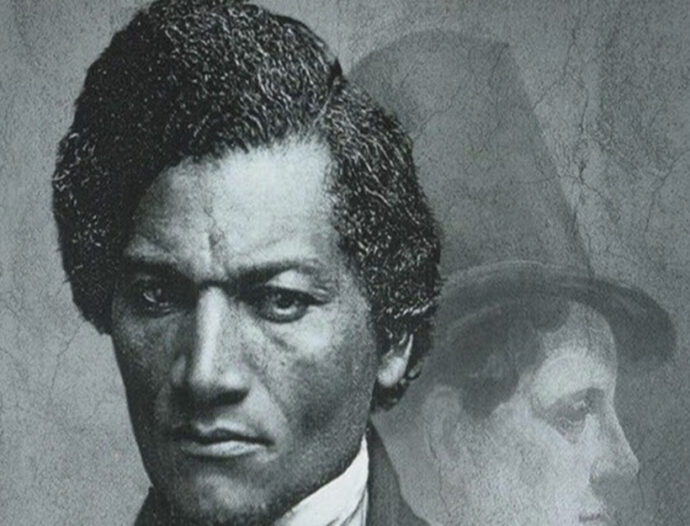
The Under-Told Connection of Frederick Douglass & Ireland
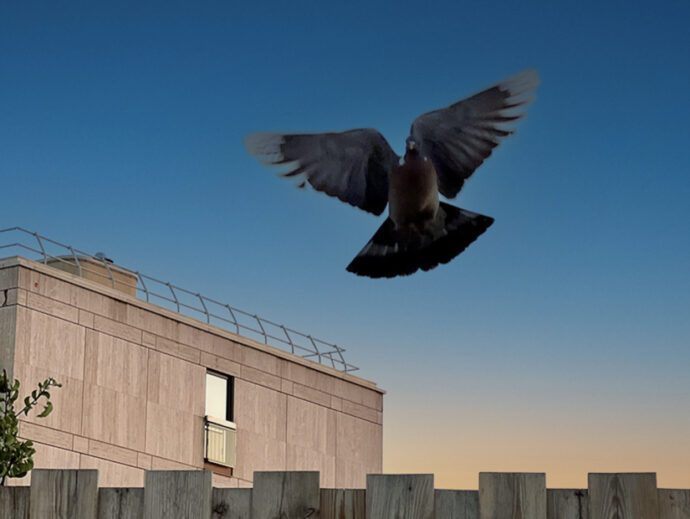
Essay | The Personal Impact of Reviewing the Film, “Till”
More stories.

12 Notable Pop Culture Anniversaries Happening in 2024
It is a brand new year and while most people are looking to shed some undesired weight, eat more salads at lunch and participate in Dry January, I’ve been investigating which pop culture moments and releases are celebrating anniversaries in 2024. Here is a list of twelve significant snapshots from every month that are celebrating anniversaries.
- Cambridge Dictionary +Plus
Meaning of peregrination in English
Your browser doesn't support HTML5 audio
- break-journey
- circumnavigation
Examples of peregrination
Translations of peregrination.
Get a quick, free translation!

Word of the Day
have irons in the fire
to be involved with many activities or jobs at the same time or to make certain that there are always several possibilities available

Binding, nailing, and gluing: talking about fastening things together

Learn more with +Plus
- Recent and Recommended {{#preferredDictionaries}} {{name}} {{/preferredDictionaries}}
- Definitions Clear explanations of natural written and spoken English English Learner’s Dictionary Essential British English Essential American English
- Grammar and thesaurus Usage explanations of natural written and spoken English Grammar Thesaurus
- Pronunciation British and American pronunciations with audio English Pronunciation
- English–Chinese (Simplified) Chinese (Simplified)–English
- English–Chinese (Traditional) Chinese (Traditional)–English
- English–Dutch Dutch–English
- English–French French–English
- English–German German–English
- English–Indonesian Indonesian–English
- English–Italian Italian–English
- English–Japanese Japanese–English
- English–Norwegian Norwegian–English
- English–Polish Polish–English
- English–Portuguese Portuguese–English
- English–Spanish Spanish–English
- English–Swedish Swedish–English
- Dictionary +Plus Word Lists
- English Noun
- Translations
- All translations
Add peregrination to one of your lists below, or create a new one.
{{message}}
Something went wrong.
There was a problem sending your report.

IMAGES
VIDEO
COMMENTS
Writer. Flore Célestine Thérèse Henriette Tristán y Moscoso (7 April 1803 - 14 November 1844), better known as Flora Tristan, was a French-Peruvian writer and socialist activist. [1] She made important contributions to early feminist theory, and argued that the progress of women's rights was directly related with the progress of the ...
She wrote several works, the best known of which are Peregrinations of a Pariah (1838), Promenades in London (1840), and The Workers' Union (1843). Tristan was also the grandmother of the painter Paul Gauguin. Flore Celestine Thérèse Henriette Tristán y Moscoso better known as Flora Tristan was a French-Peruvian socialist writer and activist ...
Flora Tristan was born in Bordeaux in April 1803 to a Peruvian-born Spanish aristocrat and bourgeois French mother. An illegitimate child of an unrecognized marriage, Tristan and her mother were financially dependent on her father and they fell into financial distress upon his death. She eventually sought out her father's family in Peru to ...
3.76. 131 ratings18 reviews. Popular history says only what it must about true rebels, so very little is remembered about Tristán, "South America's Emma Goldman." Born in Paris in 1803, her intellectual energy propelled her out of a conventional marriage into twenty years of "peregrinations"-a passionate drive to achieve political independence ...
Flora Tristan. Flore Célestine Thérèse Henriette Tristán y Moscoso (7 April 1803 - 14 November 1844), better known as Flora Tristan, was a French-Peruvian writer and socialist activist. She made important contributions to early feminist theory, and argued that the progress of women's rights was directly related with the progress of the ...
Reinaldo Arenas (born July 16, 1943, Holguín, Oriente, Cuba—died Dec. 7, 1990, New York, N.Y., U.S.) was a Cuban-born writer of extraordinary and unconventional novels who fled persecution and immigrated to the United States.. As a teenager Arenas joined the revolution that brought Fidel Castro to power in 1959. He moved to Havana in 1961 and became a researcher in the José Martí National ...
Flora Tristan (Paris, 1803 - Bordeaux, 1844), feminist writer of French and Peruvian descent, published in 1838 in Paris Peregrinations d'une paria, a chronicle on her trip to America and her stay in Peru between 1833 and 1834, sharply describing post-colonial Peruvian society and the Peruvian ideals to consolidate a Nation. In addition, she writes about her past and her marginal social ...
Consider it your gateway to that writer's greater oeuvre, if you've not read any of their work previously; a reminder if you have. ... The trip itself was undertaken in 1933/4 and the Europe that Fermor uncovers on his peregrinations is one which is beginning to spiral blindly into major conflict. Somehow this aspect makes the random acts ...
Books. Peregrinations of a Pariah: 1833-1834. Flora Tristan. Beacon Press, 1987 - Biography & Autobiography - 313 pages. The author was a socialist writer and activist. Although she was born in France, her father came from a prominent family in Peru. In 1833, she went to Peru to claim her inheritance from her uncle.
For all its flaws, We Are Pilgrims reminds us that pilgrimage remains the best metaphor we have for understanding our peregrinations through the stations of life. Tanjil Rashid is a writer and ...
Fernão Mendes Pinto (Portuguese pronunciation: [fɨɾˈnɐ̃w ˈmẽdɨʃ ˈpĩtu]; c. 1509 - 8 July 1583) was a Portuguese explorer and writer. His voyages are recorded in Pilgrimage (Portuguese: Peregrinação), his autobiographical memoir, which was published posthumously in 1614.The historical accuracy of the work is debatable due to the many events that seem far-fetched or at least ...
The Cambridge History of Travel Writing - January 2019. 'A gentle knight was pricking on the plaine', begins one of the most ambitious poems of sixteenth-century England, Edmund Spenser's The Faerie Queene (1590). Footnote 1 Within the European literary canon, epics like the Iliad, the Odyssey, the Aeneid, and the Argonautica had all begun, in some way, with the promise of a journey.
William Lithgow (c. 1582 - c. 1645) was a Scottish traveler, writer, and poet, noted for his incredible journeys throughout Europe, the Middle East, and North Africa. Lithgow is best known for his vividly detailed and comprehensive account of his travels in the book 'The Totall Discourse of the Rare Adventures & Painefull Peregrinations of ...
William Lithgow (c. 1582 - c. 1645) was a Scottish traveller, writer and alleged spy. He claimed at the end of his various peregrinations to have travelled 36,000 miles (58,000 kilometres) on foot. He claimed at the end of his various peregrinations to have travelled 36,000 miles (58,000 kilometres) on foot.
Historian, educator, and writer, Catherine Hommes' passions and expertise are in the Italian Renaissance and Celtic, Benedictine and Ignatian spirituality. Catherine has taught writing, literature, and history in a variety of settings. She is a graduate of Wheaton College, The University of Chicago, and Gordon-Conwell Theological Seminary.
Peregrinations: Journal of Medieval Art and Architecture Volume 8 Issue 2 173-184 10-2022 ... is a writer of enormous potential interest to historians, art historians, and students of Latin literature. I can think of no other 5. th-century writer who gives the reader such a strong sense of stepping straight into the picture. At the same time ...
Of Murder and Love: Peregrinations of the African Detective Writer HerVé TcHuMkAM Southern Methodist university [email protected] ABSTrAcT This article discusses the status of the African detective writer in franco-phone Africa, using examples by Driss hraïbi and Mongo Beti, two key c figures of francophone African literatures.
Whether you are an avid writer or simply someone who enjoys expanding their vocabulary, understanding how to use peregrinations in a sentence can add depth and sophistication to your linguistic repertoire. ... Peregrinations, a word derived from the Latin term "peregrinatio," refers to the act of traveling or journeying from one place to ...
For example, a historian might describe the peregrinations of an ancient explorer, chronicling their voyages across uncharted territories. Similarly, a travel writer might employ "peregrination" to evoke the spiritual significance of a pilgrimage to a sacred site, emphasizing the transformative nature of the journey. 2. Informal Conversations
A writer of asinine peregrinations, 'e's included French city (5) ULYSSES: Book about Bloom's one-day peregrinations around Dublin (7) Crossword Solver Quick Help. Enter the crossword clue and click "Find" to search for answers to crossword puzzle clues. Crossword answers are sorted by relevance and can be sorted by length as well.
Peregrine Worsthorne. Sir Peregrine Gerard Worsthorne ( né Koch de Gooreynd; 22 December 1923 - 4 October 2020) was a British journalist, writer, and broadcaster. He spent the largest part of his career at the Telegraph newspaper titles, eventually becoming editor of The Sunday Telegraph for several years. He left the newspaper in 1997.
PEREGRINATION definition: 1. a long journey in which you travel to various different places, especially on foot 2. a long…. Learn more.
Seasonal Peregrinations: Securing Our Children's Future. A 7-part Haiku on peregrinations and election cycles. ... Writer & CEO Living on Purpose, focused on gratitude, compassion, kindness ...